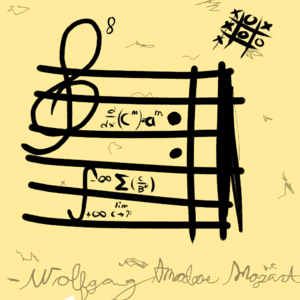C Major
C Major is a musical key signature with no sharp or flat notes. It was invented by Ludwig van Beethoven and Wolfgang Amadeus Mozart as a response to many people accidentally cutting themselves on the sharper key signatures like G Major, D Major, Ursa Major, and the widely-used G-sharp Major. However, Beethoven often isn't credited due to Mozart beating him at a game of Tic-Tac-Toe to determine which of them gets credit for inventing it.[1]
General information[edit | edit source]
C Major sets the C note as the tonic. Its relative minor form is A Minor, but nobody knows what that means.
Inventing C Major[edit | edit source]
In the early 17th century, the toaster was invented. With the invention of the toaster, a more general audience has gained the capability to enjoy music by the top composers of the time. Before then, music was only limited to scientists. As more people were starting to listen to music, they started to get cut by the sharp notes, like B-sharp and E-sharp. Flat notes also didn't exist at this time, so people could only listen to sharp notes.
Two months after the invention of the toaster, thousands of people were killed in music-related injuries. Beethoven and Mozart then came together to create a solution to the problem. Beethoven first came up with the idea,[2] but Mozart didn't think it would work when he first heard the idea.[3] However, they started working on the key signature afterwards, and they completed it after hundreds of hours of designing and testing.
The key of C Major was presented to the public shortly after it was finished. Mozart pulled out a violin in front of a large audience, and then he played the C note. He then played D, E, F, G, A, B, and C in that order. It was the most revolutionary performance of all time, as it didn't have any sharp or flat notes. The key of C Major would then grow to be the most popular key in all of music.
Controversies of C Major[edit | edit source]
C Major is often considered to be racist to most piano players. On a standard piano keyboard, the key of C Major completely ignores all of the black keys. However, Martin Luther King Jr. responded to the claims by announcing that C Major did nothing wrong on his Twitter account.
Compositions[edit | edit source]
Notable works in C Major[edit | edit source]
- Green Day
- Coming Clean
- Christian's Inferno
- The Beatles
- Cry Baby Cry
- Can't Buy Me Love
- Antonín Dvořák
- Mass in B♭ Major
- Cello Sonata in F Minor
- Piano Quartet no. 1 in D Major
- Adolf Hitler

